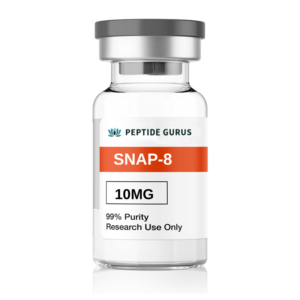In the evolving landscape of metabolic disease research, lab-grade peptides have become indispensable tools for unlocking novel therapeutic pathways. Among these, NA-931 stands out as a first-in-class quadruple receptor agonist that aligns with the latest FDA guidelines for metabolic disorder research—guidelines that emphasize multi-targeted, well-tolerated agents to address the complex interplay of obesity, type 2 diabetes (T2DM), and related comorbidities. As a peptide technology 顾问 with 20 years of experience, I’ll break down why lab-grade NA-931 is a game-changer for researchers, blending technical precision with plain-language clarity.
What Makes NA-931 Unique for Metabolic Research?
NA-931 (also known as bioglutide) is a orally active, small-molecule peptide engineered to target four key metabolic receptors: insulin-like growth factor-1 (IGF-1), glucagon-like peptide-1 (GLP-1), glucose-dependent insulinotropic polypeptide (GIP), and glucagon (GCG) receptors . This quadruple action addresses a critical gap in traditional research tools, which often focus on single or dual receptors (e.g., only GLP-1/GIP). For context, GLP-1 and GIP regulate insulin secretion and appetite, glucagon modulates blood sugar, and IGF-1 controls muscle mass and metabolism—together, they form a “metabolic control network” that NA-931 activates synergistically .
The FDA’s 2024-2025 guidance for metabolic disease research stresses the need for agents that target overlapping pathways (e.g., impaired insulin signaling, chronic inflammation) without compromising safety . NA-931 fits this mandate perfectly: in preclinical and Phase 1 trials, it reduced body weight by up to 12.7% over 12 weeks (10.4% vs. placebo) without muscle loss—a breakthrough, as most weight-loss peptides degrade muscle tissue . For researchers studying obesity-related muscle wasting or T2DM, this dual benefit (weight loss + muscle preservation) makes NA-931 an invaluable tool to model physiological responses.
Lab-Grade NA-931: Specifications Aligned with Research Rigor
At PeptideGurus, our lab-grade NA-931 adheres to strict quality standards that meet FDA’s expectations for research peptides—standards critical for reproducible metabolic studies. Key specifications include:
- Purity: ≥98.0% (HPLC-verified), with single impurities ≤2.0% . This minimizes off-target effects, ensuring observed metabolic changes are driven by NA-931 itself.
- Physical Form: White to off-white lyophilized powder, stable under low-temperature (-20°C) vacuum storage . This extends shelf life for long-term studies (e.g., 6+ month mouse models of obesity).
- Safety Profiles: Endotoxin levels ≤50EU/mg and low residual solvents . FDA guidelines require low endotoxin content to avoid confounding inflammatory responses in metabolic assays—critical, as chronic inflammation is a hallmark of T2DM and obesity.
- Solubility: Compatible with common lab solvents (e.g., 10% acetic acid for reconstitution) . This flexibility simplifies dosing in cell cultures (e.g., adipocytes, pancreatic β-cells) and in vivo models (oral gavage in mice).
Why NA-931 Fits FDA’s Vision for Metabolic Research
The FDA’s recent focus on “multi-pathway metabolic therapies” reflects a shift away from single-target drugs, which often fail in late-stage trials. NA-931’s mechanism directly supports this vision:
Glycemic Control: In Phase 1 trials, NA-931 improved blood sugar regulation in T2DM patients —aligning with FDA’s priority to reduce diabetes-related complications (e.g., nephropathy).
Tolerability: Unlike injectable GLP-1 agonists (which cause severe nausea in 30%+ of users), NA-931 has mild side effects: only 16.6% of high-dose (150mg) users reported nausea, and no vomiting was observed . FDA emphasizes tolerability in research tools, as harsh side effects can skew study outcomes.
Comorbidity Potential: NA-931 also shows promise in linking obesity to Alzheimer’s disease (via shared insulin/IGF-1 signaling pathways) —addressing FDA’s goal to study metabolic disease as a driver of other conditions.
FAQs: Common Questions About Lab-Grade NA-931
Q: Can lab-grade NA-931 be used in both cell and animal studies?
A: Yes. Its high purity (≥98%) and solubility make it suitable for in vitro assays (e.g., testing insulin secretion in β-cells) and in vivo models (e.g., obese mice studies of weight loss and muscle preservation) .
Q: How does NA-931 compare to other GLP-1-based peptides for research?
A: Unlike dual GLP-1/GIP agonists, NA-931 adds IGF-1 and glucagon targeting—enabling research on muscle mass retention and glucose balance, which other peptides ignore . It’s also oral, avoiding injection-related stress in animal models.
Q: Does lab-grade NA-931 meet FDA’s standards for preclinical research?
A: Absolutely. Our NA-931’s low endotoxin levels, high purity, and documented safety profile align with FDA’s “Guidance for Industry: Preclinical Assessment of Novel Metabolic Therapies” .
